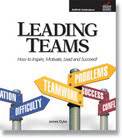The first question is the most fundamental: What do you need from me in order for you to do your best work?
The second question is built on the first: Do you have the opportunity every day to do what you do best?
The third question delves more deeply into personal motivation: Do you feel the work you do is important and has a meaningful purpose?
The fourth question seeks to tap into employee ideas and innovation: If you could wave a magic wand, what would you change around here?
I must give credit for this question to Tony Knight, a good friend, former colleague, and awesome super-manager—one of my all-time leadership heroes. I’ll tell you the story behind his question in a moment. But first allow me to explain the importance of this question and the rationale behind it.
First, this question allows managers to tap into the insights and ideas of employees at every level of work. It helps managers and supervisors unlock ways for their people to do what they do:
EASIER / BETTER / FASTER / SMARTER / CHEAPER / SAFER
Second, it helps leaders in an organization to identify problems in the organization that are creating barriers for employees to perform more effectively and more productively. In that respect, it’s another variation of question number one in this series: What do you need from me in order for you to do your best work?
BTW: My favorite variation of this question comes from CEO Jack Zenger:
“Tell me something you think I don’t want to know and don’t want to hear.”

— Image by © Royalty-Free/Corbis
Up Close and Personal
When I think about employee innovation, especially as a strategic organizational activity, I often come back to the example of Toyota Motor Manufacturing. They are well-known for their emphasis on continual improvement—what they call, “KAIZEN.” It’s part of their corporate culture and is woven into their management philosophy.
The story of the NUUMI plant in Fremont, California is a testament to Toyota’s ability to instill its manufacturing philosophy into front-line workers. It was at NUUMI that Toyota transformed formerly jaded, adversarial, combative UAW workers into a productive and engaged labor force. Toyota’s focus on engaging employees directly in the production process at the design, decision-making, and problem-solving levels played a major role in building employee pride, loyalty, productivity, and creativity at the NUUMI plant.
Question #4 unlocks an employee’s creative insights—especially with regard to their own work. Here’s the principle in a nutshell:
Every person is an expert in their own 25 square feet of space.
In other words, the person who is most likely to have ideas about how to do their work EASIER / BETTER / FASTER / SMARTER / CHEAPER / SAFER is the person who is actually doing the work!
So…why not ask them????
Question #4 also has the potential to help managers identify barriers to employee performance, productivity, and morale.
Up Close and Personal
NOW…Here’s the story behind Tony Knight’s question…
Tony took over managing an IT team at a big hospital in Texas. They had been without a manager for over three months. Morale was at an all-time low. BEFORE HIS FIRST DAY ON THE JOB, Tony sat down with each team member individually to introduce himself, get to know the employee, and ask them this question:
If you could wave a magic wand, what would you change around here?
He told me that two items came to the surface very quickly in his conversations. The first was, “Hire more people—we are swamped with work!” He was able to tell each employee, “I have permission from higher-ups to add two more people to our team. My goal is to recruit and hire them by the end of my first month.”
The second item was, “Get rid of all this furniture.” I asked Tony what that was all about. He said, “Our IT team is located in a large area in the basement of the hospital. The facilities team had adopted the bad habit of storing used and broken furniture in our workspace instead of doing their job thoroughly by arranging for its disposal. It had become a morale issue for my team. So… my first day on the job, I had the facilities team remove every piece of it. I found out later that people on my team had gone to MY boss to thank him for hiring me! It was a huge morale boost to my people.”
Tony’s experience also illustrates a principle I share with students in my management workshops:
If you listen to your people, they will hand you leadership success on a silver platter.
Susan Peppercorn put it this way:
“The best managers let workers know that their opinions count by promoting open dialogue and providing honest feedback on employees’ opinions and suggestions, supporting good ideas and addressing unfeasible ones. By asking individual team members what they feel the company could be doing better, what market opportunities the organization might be overlooking, and how to leverage company resources more effectively, you’re validating that their thoughts matter.”
But what happens if your team members identify a problem in the organization that you can’t solve??? What do you do about THAT???
Stay tuned to this blog and in an upcoming post, I will answer that question!!
In the meantime, be sure to come back next week for the 5th and final important question in this very special series!
Until next time… Yours for better leaders and better organizations,
Dr. Jim Dyke – “The Boss Doctor” ™ helping you to BE a better boss and to HAVE a better boss!


